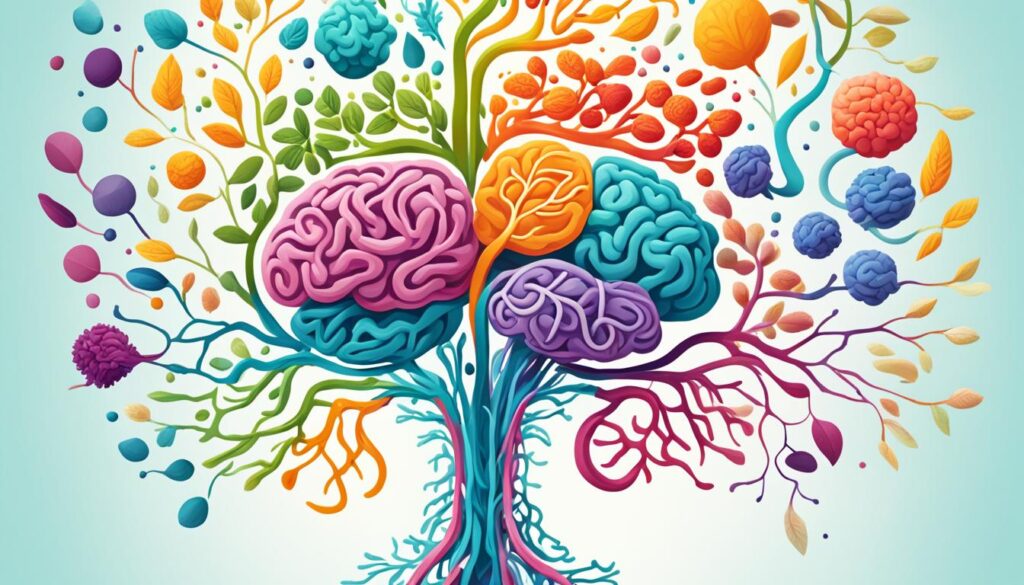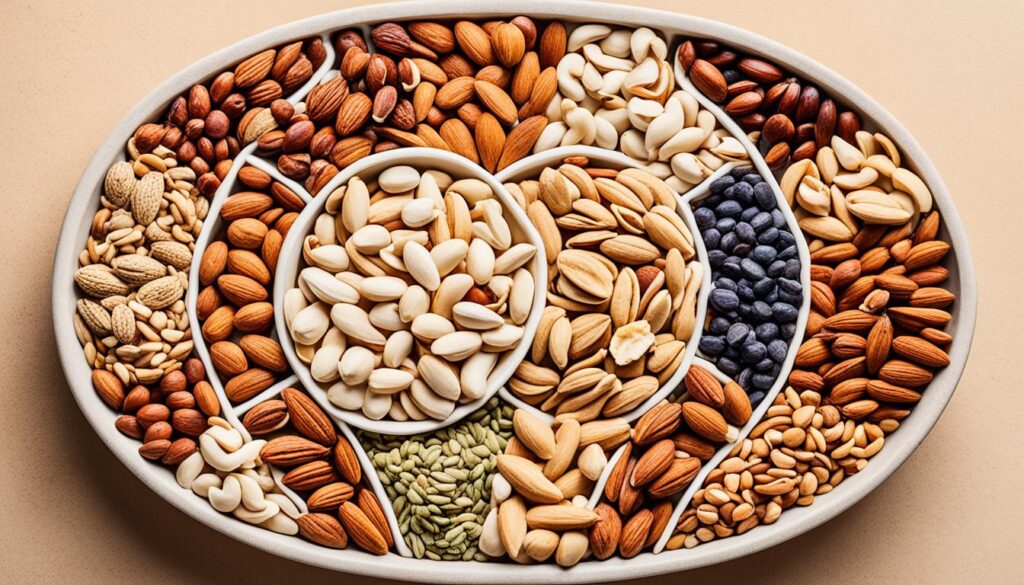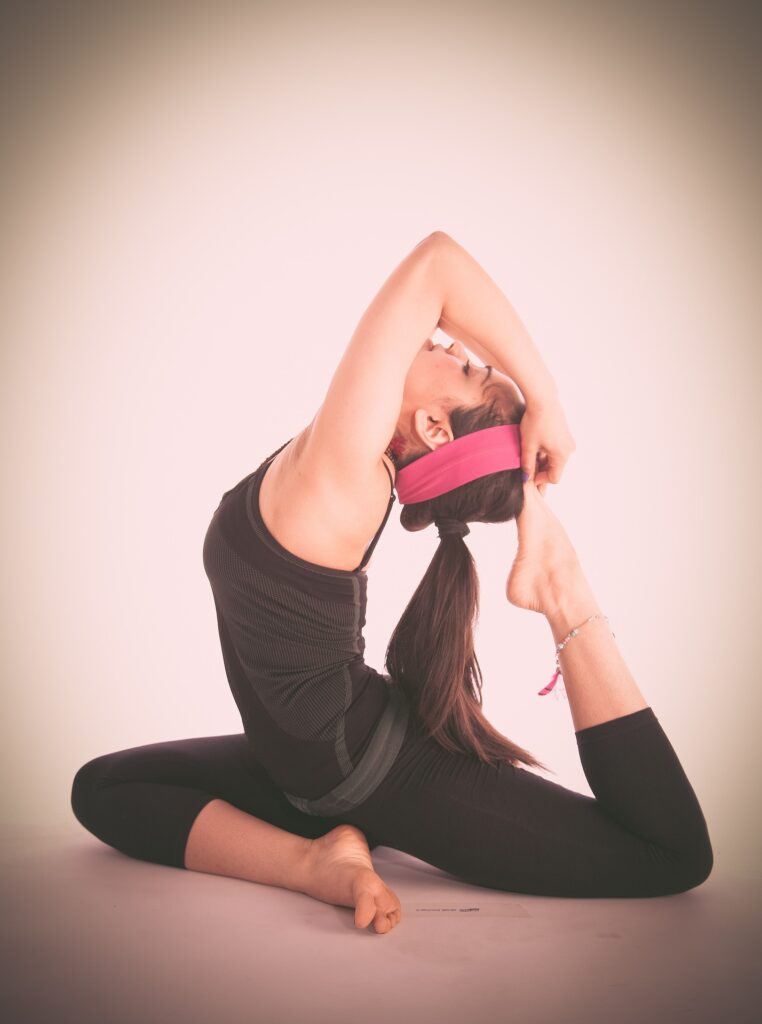Optimize Your Gastrointestinal Health Today
Are you aware of the incredible impact that your gastrointestinal health has on your overall well-being? Your digestive system is not just responsible for breaking down food and absorbing nutrients; it plays a crucial role in your immune function, mental health, and more. Taking care of your gut can lead to improved digestion, enhanced nutrient absorption, and a healthier you. But where do you start?
In this comprehensive guide, we’ll dive deep into the world of gastrointestinal health. From understanding the gut microbiome to exploring the connection between diet, lifestyle, and gut health, we’ll equip you with valuable insights and practical tips to optimize your digestive system. Whether you’re dealing with digestive disorders or simply looking to maintain a healthy gut, this article has got you covered.
So, are you ready to unlock the secrets to a thriving gastrointestinal system? Let’s get started!
Key Takeaways:
- Your gastrointestinal health plays a vital role in digestion, immune function, and mental well-being.
- The gut microbiome is a complex ecosystem of microorganisms that influences your gut health and overall wellness.
- Your diet and lifestyle choices significantly impact your gastrointestinal health.
- Regular exercise and stress management can strengthen your gut health.
- Identifying symptoms of an unhealthy gut and seeking appropriate medical care is crucial.
The Crucial Role of Gut Health in Your Overall Wellness
Gut health plays a foundational role in your overall wellness, affecting multiple bodily functions and systems. Maintaining a healthy gut is essential for a strong immune system, optimal digestion and nutrient absorption, and even mental health through the gut-brain connection. Additionally, gut health has implications for heart health and overall well-being. By prioritizing your gastrointestinal health, you can prevent gastrointestinal issues and promote a healthier you. In this section, we will explore the interconnectedness of gut health with various aspects of your well-being and emphasize the significance of prioritizing your gastrointestinal health.
“A healthy gut is the foundation of overall wellness and a thriving digestive system.”
A healthy gut contributes to a stronger immune system, helping your body defend against infections, illnesses, and diseases. The gut also plays a crucial role in digestion, breaking down food and absorbing nutrients that are essential for your overall health. Furthermore, the gut-brain connection highlights the influence of gut health on mental well-being. Research has shown that a healthy gut positively impacts brain function and can contribute to better mood, reduced anxiety, and improved cognitive function.
Moreover, gut health can impact heart health by influencing factors such as cholesterol levels and blood pressure. By maintaining a healthy gut, you can support cardiovascular well-being in addition to benefiting your immune system, digestion, and mental health.
Understanding the vital role of gut health is crucial for optimizing your overall wellness. By prioritizing your gastrointestinal health through a combination of diet, exercise, stress management, and other lifestyle choices, you can support optimal digestion, nutrient absorption, immune function, and mental well-being. Remember, a thriving gut is the key to a thriving you!
Demystifying the Gut Microbiome and Its Impact on Health
The gut microbiome is a complex ecosystem comprised of trillions of bacteria, viruses, and fungi that reside in your digestive tract. These microorganisms, often referred to as gut flora or healthy bacteria, play a crucial role in maintaining gut health and influencing overall well-being. Understanding the composition and functioning of your microbiome is key to optimizing gastrointestinal health and unlocking its numerous benefits.
About Your Microbiome
Your microbiome is unique to you, and its diversity is essential for a healthy gut. The gut flora includes various species that work together to perform important functions, such as aiding in digestion, producing vitamins, and supporting the immune system. When your gut microbiome is balanced and diverse, it can better resist harmful pathogens and maintain optimal gut health.
The Microbiome-Gut-Brain Axis
Beyond its impact on gut health, the gut microbiome also has a profound influence on the brain through what is known as the gut-brain axis. This bi-directional communication system allows the gut and the brain to exchange signals, influencing emotions, mood, and mental well-being. Research shows that imbalances in the gut microbiome can be linked to mental health disorders such as anxiety and depression.
Understanding the gut-brain axis and the intricate connection between your gut microbiome and mental health is crucial for optimizing overall wellness. By nurturing a healthy gut, you can positively impact both your gut health and brain health.

How Your Diet Influences Your Gastrointestinal Health
Your diet plays a significant role in optimizing gastrointestinal health. The foods you consume can either promote a healthy gut environment or disrupt the delicate balance of gut flora. By making conscious dietary choices, you can support optimal gut health and improve your overall well-being.
Fiber-Rich Foods for a Happy Gut
Incorporating fiber-rich foods into your daily diet is essential for maintaining a happy gut. These foods not only support healthy digestion but also prevent constipation and provide nourishment for the beneficial bacteria in your gut. Some examples of fiber-rich foods include:
- Whole grains like oats, brown rice, and whole wheat
- Fruits and vegetables, especially those with edible skins
- Legumes like beans, lentils, and chickpeas
- Nuts and seeds, such as almonds, chia seeds, and flaxseeds
By incorporating these fiber-rich foods into your meals and snacks, you can support a thriving gut and maintain optimal gastrointestinal health.
Fermented Foods and Probiotics to Boost Gut Flora
Another way to improve your gut health is by including fermented foods and probiotics in your diet. Fermented foods undergo a natural process of microbial fermentation, which leads to the growth of beneficial bacteria. These foods not only enhance the microbial diversity in your gut but also improve gut flora and overall gastrointestinal health.
Some examples of fermented foods include:
- Yogurt
- Kefir
- Sauerkraut
- Kombucha
- Miso
- Kimchi
Probiotics, which are live bacteria and yeasts, can also be consumed through supplements. Incorporating probiotics into your diet can further support the balance of gut flora and improve your gastrointestinal health.
Strengthening Gut Health Through Regular Exercise
When it comes to gut health, exercise is not just about getting in shape—it also plays a significant role in promoting a healthy digestive system. Regular physical activity has been shown to have numerous benefits for gut health, including influencing the composition and diversity of the gut microbiome, improving digestion, enhancing gut motility, and supporting immune function.
Studies have demonstrated that exercise can have a positive impact on the gut microbiome—the community of microorganisms that reside in your digestive tract. Engaging in aerobic activities and strength training can help promote beneficial gut bacteria and increase microbial diversity, contributing to a healthier gut environment.
In addition to its effects on the gut microbiome, exercise can also improve digestion by enhancing gut motility. Physical activity stimulates muscle contractions in the intestines, helping to move food through the digestive system more efficiently and prevent issues such as constipation.
Furthermore, regular exercise has been shown to boost immune function, which is closely linked to gut health. Exercise promotes the circulation of immune cells throughout the body, including the gut, strengthening the body’s defense mechanisms and reducing the risk of gastrointestinal infections and inflammation.
Incorporating physical activity into your routine doesn’t have to be complicated. Aim for a balanced mix of aerobic exercises, such as running, swimming, or cycling, and strength training activities, such as weightlifting or bodyweight exercises. You can start small and gradually increase the intensity and duration of your workouts as your fitness level improves.

Remember to consult with your healthcare provider before starting any new exercise program, especially if you have existing health conditions.
By making regular exercise a part of your lifestyle, you can strengthen your gut health, support optimal digestion, and enhance your overall well-being.
Lifestyle Habits that Promote a Healthy Digestive System
In addition to a balanced diet and regular exercise, certain lifestyle habits play a crucial role in promoting a healthy digestive system. By incorporating these habits into your daily routine, you can support healthy digestion, maintain gastrointestinal wellness, and improve overall gut health.
Limiting Alcohol for Better Gut Integrity
While it’s okay to enjoy an occasional drink, excessive alcohol consumption can have detrimental effects on your gut health. Alcohol can irritate and inflame the lining of your digestive tract, disrupt the balance of gut flora, and compromise the integrity of your gut barrier. This can lead to digestive issues such as bloating, diarrhea, and even more serious conditions like leaky gut syndrome.
To support your digestive system, it’s important to limit your alcohol intake. Moderation is key. If you choose to drink alcohol, try to stick to recommended guidelines such as one drink per day for women and two drinks per day for men.
Stress Management: Calming the Second Brain
Did you know that stress can have a significant impact on your gut health? The gut-brain connection is a bidirectional communication pathway that links your brain and your gut. When you’re stressed, your body releases stress hormones that can disrupt the normal functioning of your digestive system. This can result in symptoms such as stomachaches, cramps, and changes in bowel movements.
Managing stress is essential for maintaining gastrointestinal wellness. Find healthy ways to cope with stress, such as practicing mindfulness, engaging in regular exercise, getting enough sleep, and seeking support from loved ones or professionals. Prioritizing stress management can help calm your “second brain” and support a healthy gut.
Supplements and Their Role in Gastrointestinal Wellbeing
While a healthy diet and lifestyle should be the foundation of gut health, supplements can play a supportive role in optimizing gastrointestinal wellbeing. Probiotic supplements can provide beneficial bacteria to support a healthy gut microbiome, while prebiotic supplements can nourish these bacteria and promote their growth. Digestive enzyme supplements can aid in the digestion and absorption of nutrients, especially in individuals with digestive disorders.
Understanding the role of supplements in supporting gut health is essential for making informed decisions about incorporating them into your routine. It’s always recommended to consult with a healthcare professional who can guide you on the right supplements for your specific needs.
Identifying and Addressing Symptoms of an Unhealthy Gut
Paying attention to the symptoms of an unhealthy gut is crucial for early identification and intervention. When it comes to gastrointestinal health, it’s important to recognize the signs that indicate an underlying issue. Common symptoms of an unhealthy gut include:
- Abdominal pain: A persistent or recurrent discomfort in the stomach area.
- Bloating: A feeling of fullness or swelling in the abdomen, often accompanied by gas.
- Constipation: Difficulty or infrequency in passing stools.
- Diarrhea: Loose or watery stools that occur more often than usual.
- Irregular bowel movements: Changes in the frequency or consistency of stools.
If you experience any of these gastrointestinal symptoms, it may indicate an unhealthy gut. However, it’s important to consult with a healthcare professional for a comprehensive gut health assessment. Seeking appropriate medical evaluation can help diagnose and address any underlying digestive disorders.
Remember, paying attention to your gut health is essential for overall well-being. Take action when you notice any unusual symptoms and work with healthcare experts to optimize your digestive health.

Navigating Digestive Disorders: Prevention and Management
Digestive disorders, including various gastrointestinal diseases, can have a significant impact on overall health and quality of life. To maintain optimal gut health, it is crucial to navigate these conditions effectively. This involves understanding the risk factors, implementing preventive strategies, adopting management techniques, and seeking appropriate medical care. By doing so, you can take control of your digestive health and support your overall well-being.
Common Digestive Disorders
There are numerous digestive disorders that individuals may encounter. Some of the most prevalent conditions include:
- Acid reflux
- Peptic ulcers
- Irritable bowel syndrome (IBS)
- Inflammatory bowel disease (IBD)
- Gallstones
- Chronic constipation
- Diverticulitis
- Liver diseases, such as hepatitis and cirrhosis
While these conditions may differ in their causes and symptoms, proper prevention and management strategies can play a crucial role in alleviating symptoms and improving overall gut health.
Prevention Strategies
Preventing digestive disorders involves adopting healthy lifestyle habits and minimizing risk factors. Here are some prevention strategies to consider:
- Follow a balanced diet rich in fiber, fruits, vegetables, and whole grains to support gut health.
- Stay hydrated to ensure proper digestion and regular bowel movements.
- Avoid tobacco and excessive alcohol consumption, as they can disrupt the digestive system.
- Maintain a healthy weight through regular exercise and portion control.
- Practice good food hygiene to prevent foodborne illnesses.
- Manage stress levels, as chronic stress can impact gut function.
By implementing these preventive measures, you can reduce the risk of developing digestive disorders and support a healthy gut.
Management Techniques
If you are already dealing with a digestive disorder, effective management techniques can help alleviate symptoms and improve your quality of life. Here are some strategies to consider:
- Work closely with a healthcare professional to develop an individualized treatment plan.
- Follow any prescribed medications and treatments as directed.
- Make dietary modifications based on your specific condition, such as avoiding trigger foods.
- Practice portion control and mindful eating to support digestion.
- Engage in regular physical activity to promote healthy bowel movements and overall gut function.
- Manage stress through techniques like meditation, deep breathing, and relaxation exercises.
- Consider complementary therapies, such as acupuncture or herbal remedies, under the guidance of a healthcare professional.
Remember, managing a digestive disorder requires a multidimensional approach tailored to your individual needs. Working closely with your healthcare team will help you navigate your condition effectively.

Importance of Ongoing Gut Health Support
Even after successfully preventing or managing a digestive disorder, ongoing support for gut health is essential. This includes:
- Maintaining a balanced diet that supports gut health and overall well-being.
- Regularly engaging in physical activity to promote healthy digestion and gut function.
- Managing stress levels to prevent its negative impact on the digestive system.
- Seeking regular check-ups with a healthcare professional to monitor gut health and address any concerns.
- Considering probiotic supplements or incorporating probiotic-rich foods to support a healthy gut microbiome.
By prioritizing ongoing gut health support, you can sustain the positive effects of prevention and management strategies, ensuring long-term digestive wellness.
Risks to Your Gastrointestinal Health and How to Mitigate Them
When it comes to maintaining a healthy gut, it’s important to be aware of the risks that can compromise your gastrointestinal health. These risks can disrupt the balance of your gut microbiome and lead to various digestive issues. In this section, we’ll explore two significant factors that can pose risks to your gut health: excessive antibiotic use and smoking, along with other habits that can compromise gut function.
Impact of Excessive Antibiotic Use on Gut Health
Excessive antibiotic use can have a detrimental effect on your gastrointestinal health. While antibiotics are essential for treating bacterial infections, they can also disrupt the diversity of gut bacteria. This imbalance can lead to antibiotic-associated gastrointestinal issues such as diarrhea, abdominal pain, and bloating. To mitigate these risks:
- Only take antibiotics when prescribed by a healthcare professional and follow the recommended dosage.
- Consider probiotic supplementation during and after antibiotic treatment to help restore the balance of beneficial bacteria in the gut.
- Focus on incorporating probiotic-rich foods, such as yogurt, kefir, and sauerkraut, into your diet to support a healthy gut microbiome.
By being mindful of antibiotic use and taking steps to support your gut microbiome, you can minimize the negative impact on your gastrointestinal health.
How Smoking and Other Habits Compromise Gut Function
Smoking is not only harmful to your respiratory system but also compromises gut function and overall gut health. Cigarette smoke contains harmful chemicals that can disrupt the digestive system and lead to various gastrointestinal issues. Additionally, other habits such as excessive alcohol consumption and poor sleep can also negatively affect gut function. To protect your gastrointestinal health:
- Quit smoking or seek support to quit smoking if you’re a current smoker.
- Limit alcohol consumption and practice moderation.
- Create a bedtime routine that promotes quality sleep and ensures an adequate amount of rest each night.
By making these positive lifestyle changes, you can reduce the risks to your gut health and support overall gastrointestinal well-being.
With the image above, it is visually appealing and relevant to the topic of risks to gut health. The image alt attribute contains the keyword “risks to gut health” to enhance SEO relevance.
By recognizing and mitigating the risks posed by excessive antibiotic use, smoking, and other compromising habits, you can take proactive steps to maintain a healthy gut. A well-balanced and functioning gut is crucial for overall well-being and digestive wellness.
Gastrointestinal Health: Achieving Balance Through Diet and Lifestyle
Achieving and maintaining gastrointestinal health is a result of adopting a balanced approach to both diet and lifestyle. Incorporating nutrient-rich foods, fiber, and probiotic-rich options into your meals, while also engaging in regular exercise, managing stress, and practicing healthy habits are all key components of gastrointestinal wellness.
When it comes to diet, focus on consuming a variety of foods that provide the essential nutrients your gut needs to thrive. Include plenty of fruits, vegetables, whole grains, lean proteins, and healthy fats in your meals. These foods are packed with vitamins, minerals, antioxidants, and fiber, which are all beneficial for gut health.
To maintain optimal gastrointestinal wellness, it’s important to prioritize regular exercise. Physical activity not only helps to improve digestion and gut motility but also contributes to a healthy gut microbiome. Aim for at least 150 minutes of moderate-intensity aerobic exercise or 75 minutes of vigorous-intensity aerobic exercise each week, along with strength training exercises twice a week.
Stress management is another vital aspect of maintaining a healthy gut. Chronic stress can disrupt the gut-brain connection and lead to gastrointestinal issues. Incorporate stress-reducing practices into your daily routine, such as deep breathing exercises, meditation, yoga, or engaging in hobbies that bring you joy.
Lastly, practicing healthy habits such as getting enough sleep, staying hydrated, and avoiding excessive alcohol consumption can further support gastrointestinal wellness. Sleep plays a crucial role in gut health, as it allows the body to repair and restore its systems, including the digestive system. Hydration is essential for maintaining optimal digestion, while excessive alcohol intake can disrupt gut integrity and negatively impact gut flora balance.
By adopting a balanced approach to both diet and lifestyle, you can achieve and maintain gastrointestinal health. Remember to listen to your body, be mindful of the foods you consume, and make choices that prioritize your gut’s well-being. Small, sustainable changes in your daily routine can make a significant difference in achieving a harmonious balance between your gut and overall wellness.
Conclusion
Your gut health is the key to overall wellness and a thriving digestive system. It’s important to prioritize your gastrointestinal health by making thoughtful choices in your diet, exercise routine, and lifestyle habits. By doing so, you can promote optimal digestion, nutrient absorption, immune function, and mental well-being. Remember to listen to your body and be mindful of any gut health symptoms that may arise.
If you experience any gastrointestinal issues, it’s essential to seek appropriate medical care to address them. Don’t hesitate to consult with healthcare professionals who can provide guidance and support. Taking proactive steps to maintain a healthy gut is crucial, as your gut plays a vital role in your overall health and well-being.
So, embrace a balanced approach to your gut health journey. Make wise choices that nurture your digestive system and prioritize your overall wellness. Your gut-brain connection will thank you for it, and you’ll enjoy the benefits of a happy and healthy gut.
FAQ
What is the importance of gut health?
Gut health is crucial for overall wellness as it influences digestion, nutrient absorption, immune function, and mental health.
What is the gut microbiome?
The gut microbiome is a collection of trillions of bacteria, viruses, and fungi that reside in the digestive tract.
How does diet affect gastrointestinal health?
Certain foods, such as fiber-rich foods and fermented foods, promote a healthy gut environment and improve gut health.
Can exercise improve gut health?
Yes, regular exercise can enhance gut health by influencing the composition of the gut microbiome, improving digestion, and supporting gut motility.
How do lifestyle habits impact gut health?
Lifestyle habits such as limiting alcohol consumption and managing stress are important for maintaining gut integrity and supporting gastrointestinal wellness.
Can supplements help improve gastrointestinal health?
Yes, probiotic supplements, prebiotic supplements, and digestive enzyme supplements can support a healthy gut.
What are the symptoms of an unhealthy gut?
Symptoms of an unhealthy gut can include abdominal pain, bloating, constipation, diarrhea, and irregular bowel movements.
How can digestive disorders be managed?
Preventing and managing digestive disorders involves understanding the risk factors, implementing lifestyle modifications, and seeking medical care as needed.
What are the risks to gastrointestinal health?
Excessive antibiotic use, smoking, alcohol consumption, and poor sleep can pose risks to gut health and compromise the gut microbiome.
How can I achieve a balanced approach to gut health?
Maintaining gastrointestinal health involves adopting a balanced diet, engaging in regular exercise, managing stress, and practicing healthy habits.
How can I optimize my gastrointestinal health?
Prioritize your gut health by making healthy diet choices, exercising regularly, managing stress, and seeking appropriate medical care when needed.





















































